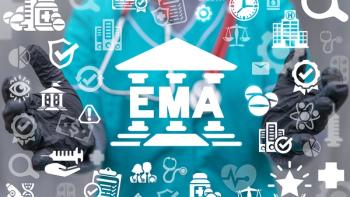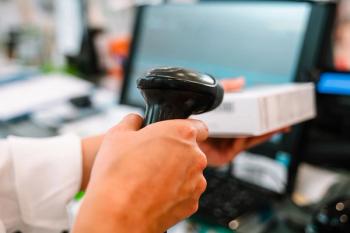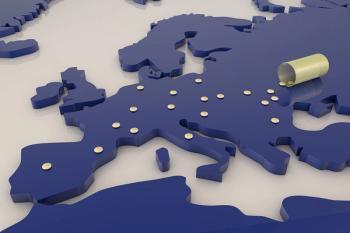
- Pharmaceutical Technology-07-02-2008
- Volume 32
- Issue 7
Charting API Market Growth and Opportunity
The year 2007 was slow for approvals for new molecular entities and overall pharmaceutical industry growth. Big Pharma seeks relief in a growing biologics portfolio.
The year 2007 was a period of transition for the pharmaceutical industry. Global sales of prescription biotechnology drugs increased in the double-digits, well outpacing overall pharmaceutical industry growth and the rate of growth achieved by the top 10 global and US products. The number of new drug approvals by the
Patricia Van Arnum
Product positioning for the top spots
Global sales. The top 10-selling products accounted for $63.9 billion, or 9.6% of the global pharmaceutical market (based on manufacturer prices for prescription and certain over-the-counter product data), according to IMS (see Table I). Global sales of the top 10 products grew 5.6% in 2007, slightly below the 6.4% growth for the global industry as a whole.
Pfizer's (New York) "Lipitor" (atorvastatin) retained its top billing as the number one selling drug in 2007, with global sales of $13.5 billion, down 2.8% from 2006, according to
Table I: Top products by 2007 global sales.
Two biologics—
Last year saw two newcomers to the global top 10. With a sales gain of 16.2% to $4.6 billion, AstraZeneca's "Seroquel" (quetiapine) ranked eighth in 2007.
Facing potential generic competition and dropping out of the top 10 in 2007 from 2006 were
US sales. US sales of prescription pharmaceuticals tallied $286.5 billion in 2007, according to IMS Health (see Table II). Eight of the top 10 global products (Lipitor, Nexium, Seretide/Advair, Plavix, Seroquel, Singulair, Enbrel, and Aranesep) were also ranked in the top 10 in US sales. Lipitor took top billing with US sales of $8.1 billion in 2007. Two drugs—Wyeth's "Prevacid" (lansoprazole) and Amgen's "Epogen" (epoetin alfa) made the top 10 US list but not the top 10 global rankings.
Table II: Top products by 2007 US sales.
The rise of biotech drugs
Global sales of prescription biotechnology drugs increased 12.5% to more than $75 billion in 2007, according to IMS Health. This rate of growth was nearly double the rate of growth of 6.4% for the overall global pharmaceutical market, but down from the 18.2% growth for biotech products experienced in 2006. The biotech drug market, however, represents only about 10% of the global pharmaceutical market, which was valued at $712 billion in 2007. The US remains the largest market for biotech products and holds 56% of the global market.
Twenty-two biotech products generated sales exceeding $1 billion in 2007, compared with just six products in 2002, according to IMS. Enbrel was the top biotech product in 2007, followed by Aranesp. J&J's and
IMS estimates biotech products represent 25% of the total pharmaceutical pipeline. The firm projects that six products with market potential of $1 billion are expected to be launched by 2009.
Innovation drought
The level of product innovation, as measured by the number of approvals of new molecule entities (NMEs) and new biologics license applications (BLAs) by CDER, reached a recent low in 2007. In 2007, CDER approved 19 new drugs (17 NMEs and 2 BLAs) (see Table III). These levels represent a slight decline from approvals in 2006 and 2007 and a steep decrease from 2004. CDER approved 22 new drugs in 2006 (18 NMEs and 4 BLAs), 20 new drugs in 2005 (18 NMEs and 2 BLAs), and 36 new drugs (31 NMEs and 5 BLAs) in 2004, according to FDA data.
Table III: New molecular entities approvals, January 2007âMay 2008.*
Generics' threat
As innovator companies struggle, opportunities for generic-drug companies are fairly strong. Over 150 products, including 20 blockbusters, with $77 billion in total branded drug sales in the US, are coming off patent through 2012, according to data from
Patricia Van Arnum is a senior editor at Pharmaceutical Technology, 485 Route One South, Bldg F, First Floor, Iselin, NJ 08830 tel. 732.346.3072,
Reference
1. P. Van Arnum, "Rocky Outlook for Pharmaceuticals," Pharm. Technol. Sourcing and Management 4 (4), 2008.
Articles in this issue
over 17 years ago
Coming Down the Pike: Protein-Substrate Bindingover 17 years ago
Trends: Industry Job Cutsover 17 years ago
Self-Emulsifying Drug Delivery Systemsover 17 years ago
A Path to Quality and Complianceover 17 years ago
Excipients in Polymeric Drug Delivery and Formulationsover 17 years ago
ePedigree: Using the Gift of Time Wiselyover 17 years ago
Variables Affecting Reconstitution Time of Dry Powder for Injectionover 17 years ago
Report From: The Netherlandsover 17 years ago
Manufacturing Insights: PfizerNewsletter
Get the essential updates shaping the future of pharma manufacturing and compliance—subscribe today to Pharmaceutical Technology and never miss a breakthrough.




